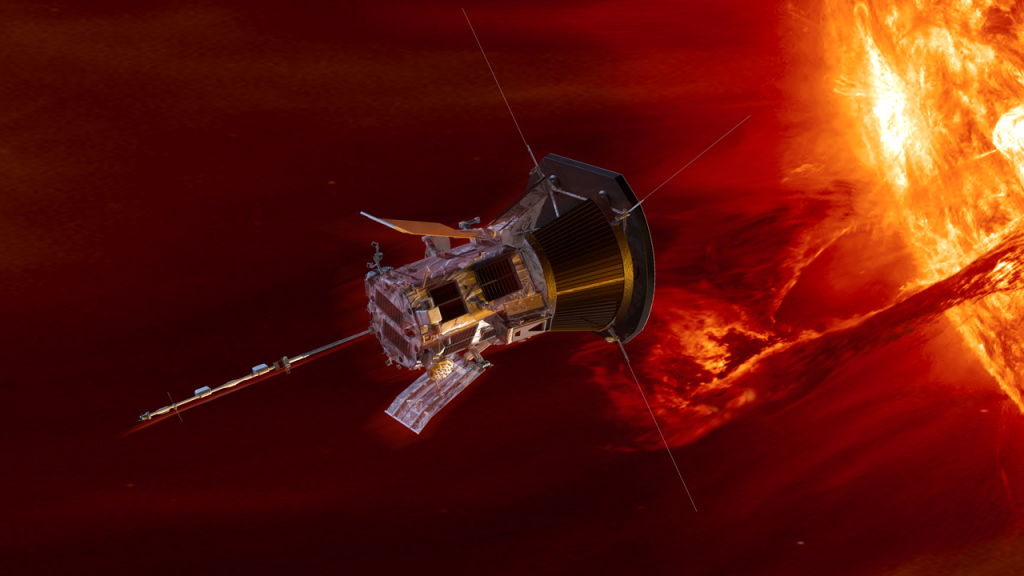Thematic group: PEPS
Scientific Leader: Alexis Rouillard
Description / Background
Parker Solar Probe is a NASA probe launched in 2018 that will enter the solar atmosphere for the first time to study the mechanisms that heat the solar corona and propel the solar wind. Parker Solar Probe uses Venus’ gravitational assistance to reduce the perihelion of its orbit. The spacecraft made its first passage into regions close to the Sun a few weeks after its launch at 36 solar radii from its surface. The Solar Observatory will use Venus’ gravitational assistance seven times to modify its orbit to 9.86 solar rays from the Sun’s surface by 2024. The probe is equipped with both remote sensing instruments for observing the solar corona and in situ instruments. Two heliospheric imagers, part of the WISPR (Wide-field Imagers for Solar PRobe) experiment provide images of the solar atmosphere to study the large-scale dynamics of the corona and the solar wind. Three suites of instruments (FIELDS, ISIS and SWEAP) measure electric and magnetic fields, radio and plasma wave emissions, energetic particles (from 10 keV to 100 MeV) and properties of electrons, protons and helium ions.
Scientific objectives
The main objectives of Parker Solar Probe are to study the structure and dynamics of the coronal plasma and magnetic field of the Sun, the mechanisms that heat the solar corona and generate the solar winds, and the processes that accelerate energetic particles to high energies. By approaching the Sun, the probe should provide the necessary data to determine the origin of the different solar winds, in particular the mechanisms that form the slow solar wind which are still debated.
Involvement of IRAP
IRAP is officially involved in the analysis of WISPR instrument images and SWEAP in situ measurements but close collaborations are ongoing with all instrument suites.
Partners
Our partners are the Naval Research Laboratory, the John Hopkins Applied Physics Laboratory and the University of Michigan. The scientific activities around the PSP mission are funded by CNES. We also benefit from ERC (SLOW_SOURCE) and ANR (COROSHOCK) funding, two projects that exploit Parker Solar Probe data extensively.


